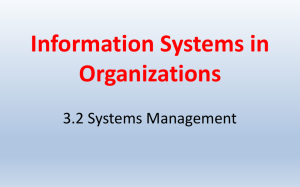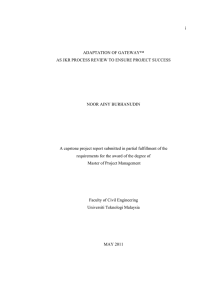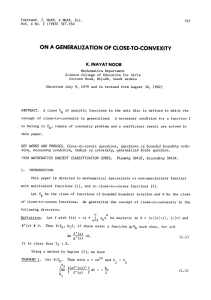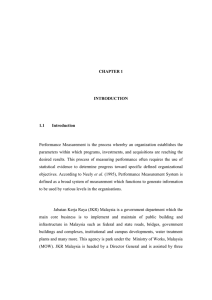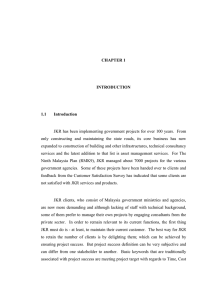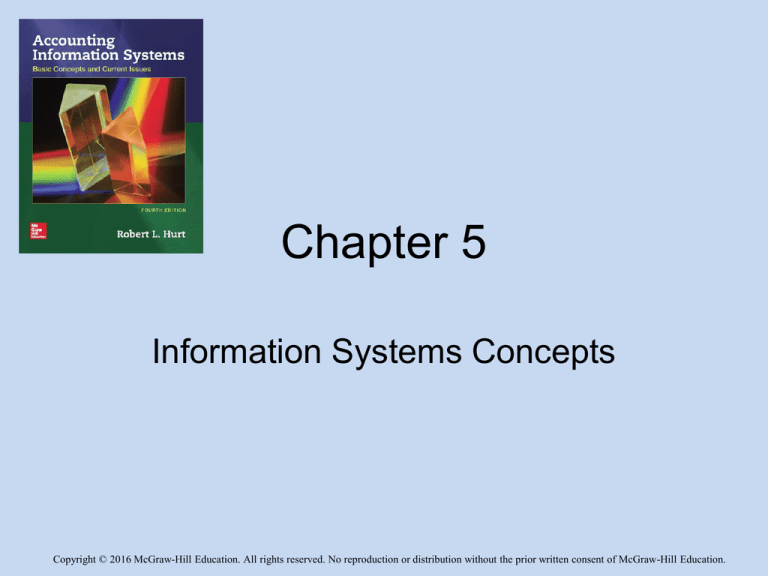
Chapter 5
Information Systems Concepts
Copyright © 2016 McGraw-Hill Education. All rights reserved. No reproduction or distribution without the prior written consent of McGraw-Hill Education.
Outline
• Learning objectives
• Systems development life cycle
• Capability maturity model
• IT decision factors
5-2
Learning objectives
1) List and discuss, in
order, the steps in the
systems development
life cycle.
2) Explain the
advantages and
disadvantages of
using the SDLC.
3) Apply the SDLC in
accounting contexts.
4) List and discuss the
levels of the capability
maturity model.
5) Classify organizations’
processes according
to the CMM.
6) Explain factors
managers should
consider when
choosing IT for an
AIS.
5-3
Systems development life cycle
• A structured
methodology for
developing
information systems
• Advantages
– Structure
– User input
– Widely known
• Disadvantages
–
–
–
–
Rigid
Time consuming
Costly
Does not fit every
situation
5-4
Systems development life cycle
Initiation /
planning
Requirements
analysis
Design
Build
Test
Implementation
Operations &
maintenance
5-5
Systems
development life 1) Initiation / planning.
JKR Corporation has a
cycle
Here’s an example of
how to apply the SDLC
in accounting information
systems.
lot of data in its AIS; it
wants to use a data
analytics tool to make
sense of it.
2) Requirements analysis.
The tool must be
comprehensive and
widely used in similar
organizations.
5-6
Systems
3) Design. JKR wants to
development life
use decision trees, neural
cycle
networks and various
Here’s an example of
how to apply the SDLC
in accounting information
systems.
statistical tests to analyze
its data.
4) Build. Rather than
creating a tool from
scratch, JKR evaluates
several data analytics
packages from various
vendors: Excel, SAS
Enterprise Miner and SAP
HANA.
5-7
Systems
development life 5) Test. After examining
each package, JKR
cycle
Here’s an example of
how to apply the SDLC
in accounting information
systems.
chose SAS Enterprise
Miner. The software is
installed on a few
computers; users
provide feedback on
training and
customization issues.
5-8
Systems
development life 6) Implementation. JKR
installs SAS Enterprise
cycle
Here’s an example of
how to apply the SDLC
in accounting information
systems.
Miner throughout the
organization, and
provides training to staff
who will use it.
7) Operations &
maintenance. JKR’s IT
department supports
users via its help desk
and other means.
5-9
Capability maturity model
• Developed by Watts
• Can be used in other
Humphreys
contexts
• Five levels
• Business processes
– Sales / collection
• Initially used to
– Acquisition / payment
evaluate the
– Conversion
sophistication of
– Human resources
business processes in
– Financing
government
contractors
5-10
Capability maturity model
• Level One: chaotic
• Level Two: repeatable
Business processes are
Business processes
not standardized.
involve major milestones
Individuals develop their
and specific deliverables.
own processes, but they
They may yield consistent
do not share them with
results over time.
others.
5-11
Capability maturity model
• Level Three: defined
• Level Four: managed
Business processes are
Processes are measured;
developed based on
that is, the organization
broader organizational
uses metrics to evaluate
standards. They are
their performance.
described in more detail.
5-12
Capability maturity model
• Level Five:
optimized
Optimized
The organization uses a
Managed
“total quality” philosophy
Defined
for its business
processes and other
important elements.
Repeatable
Chaotic
5-13
IT decision factors
• Things to consider
when developing /
purchasing a new form
of information
technology
• Macro-level
– Need
– Strategic fit
– Personnel involvement
– Financing
• Micro-level
– Cost
– Adaptability
– Training
– Vendor reliability
5-14
5-15






